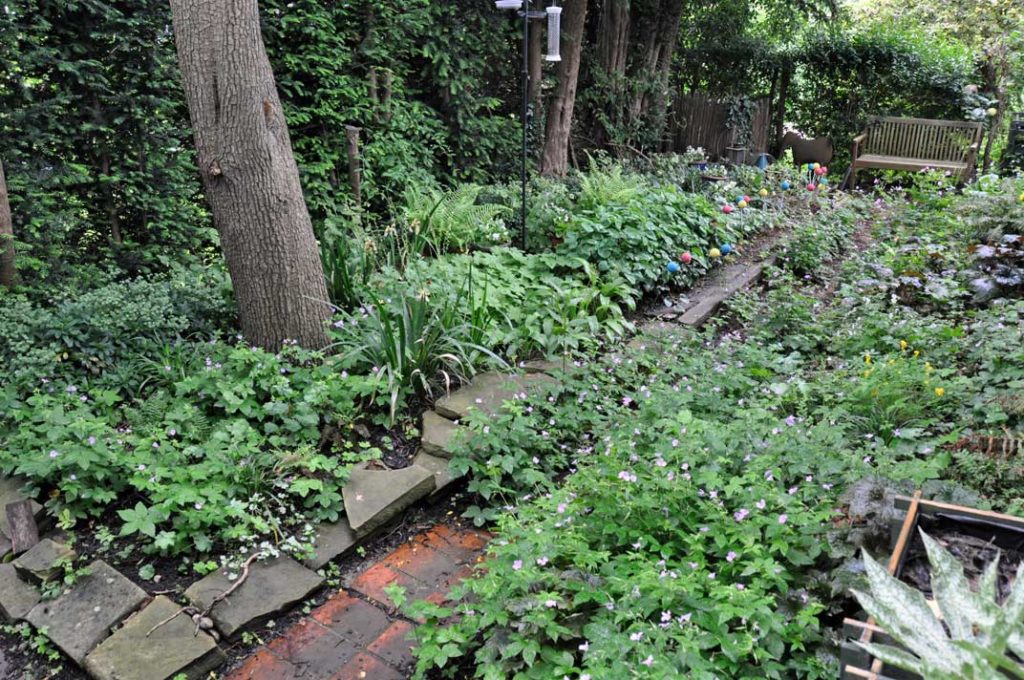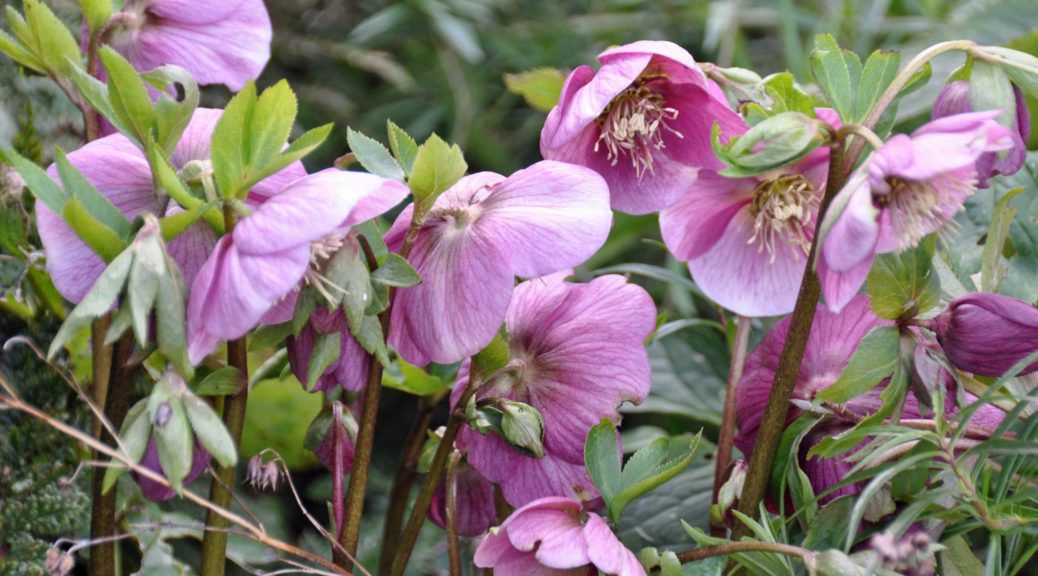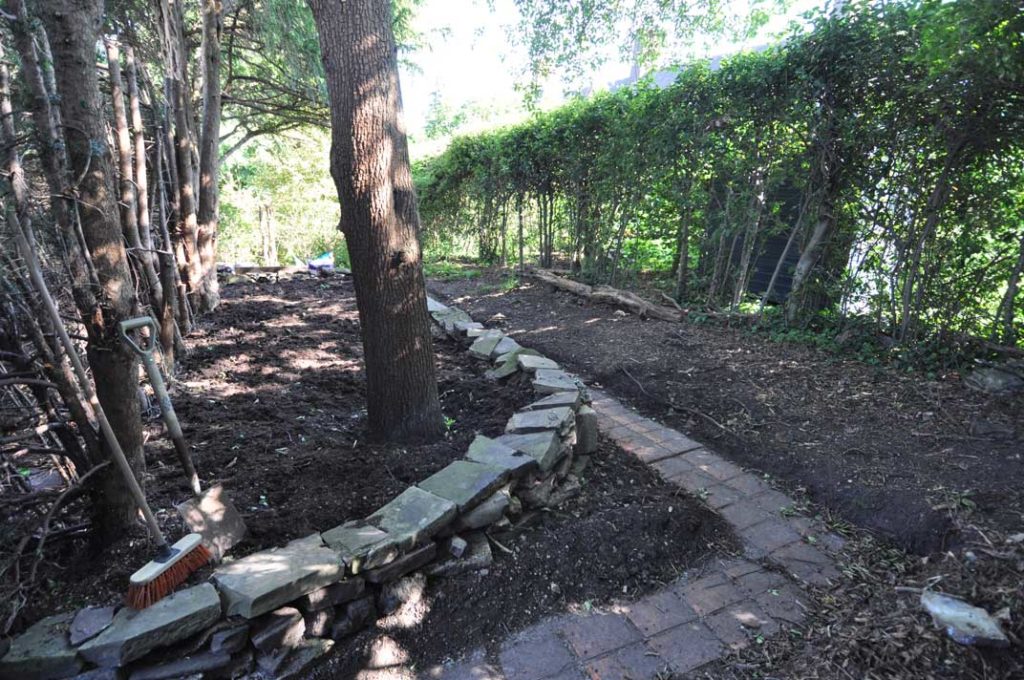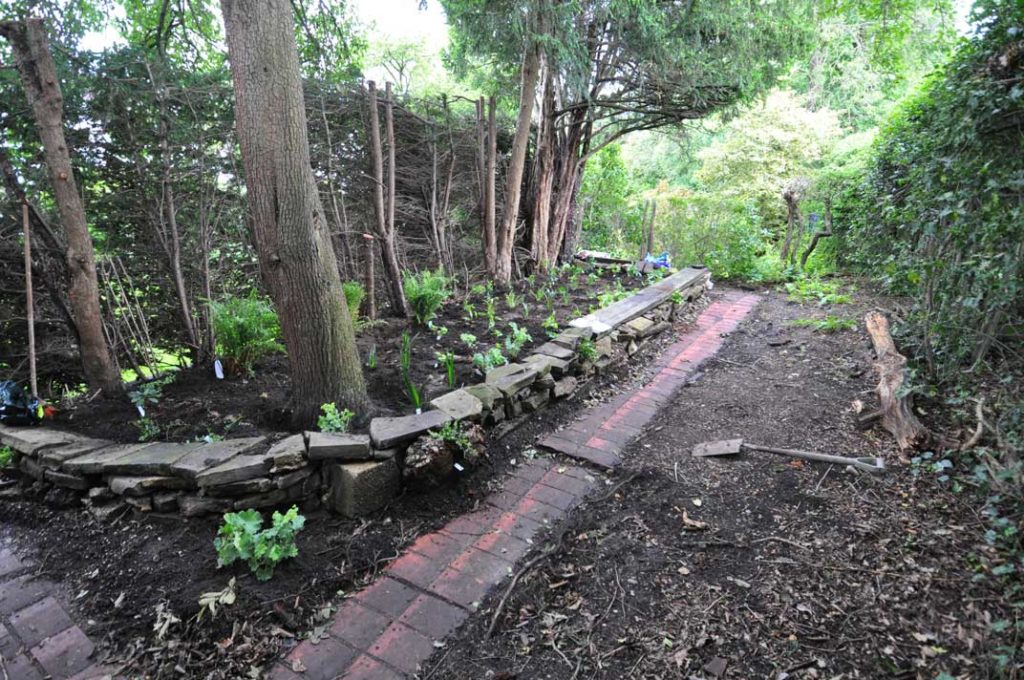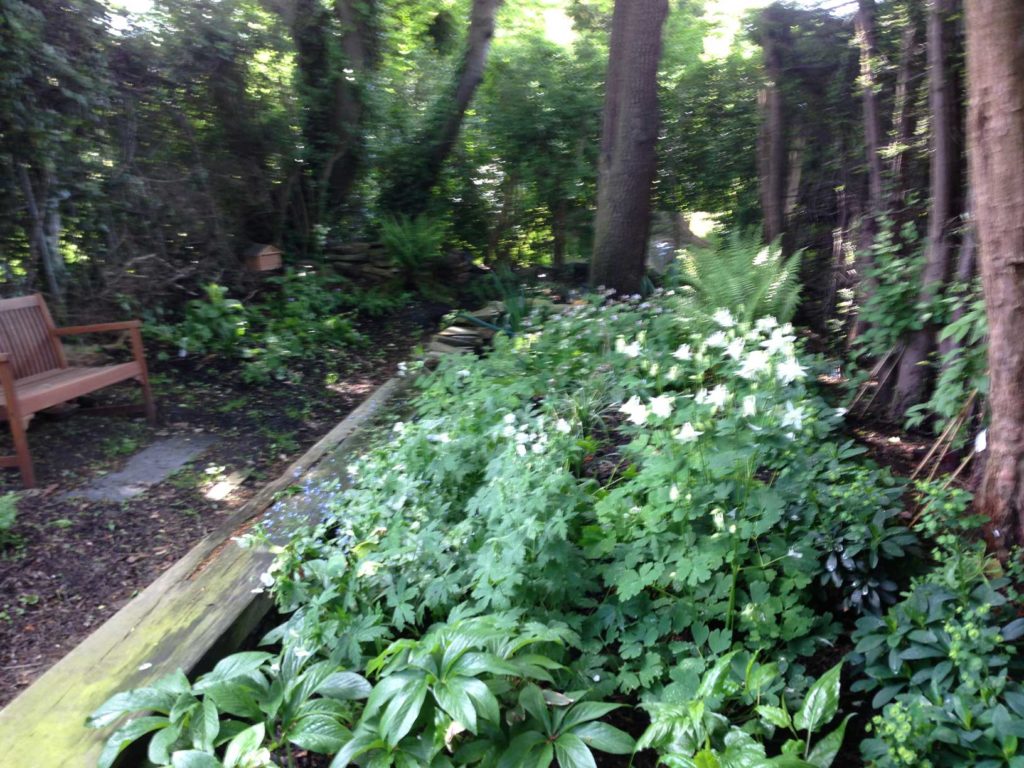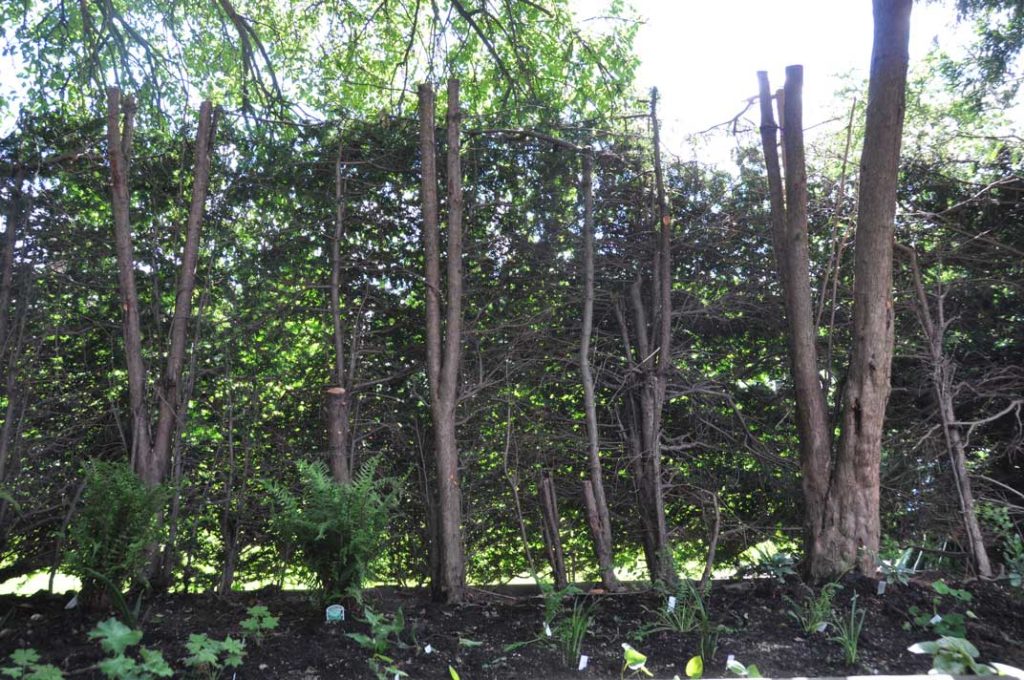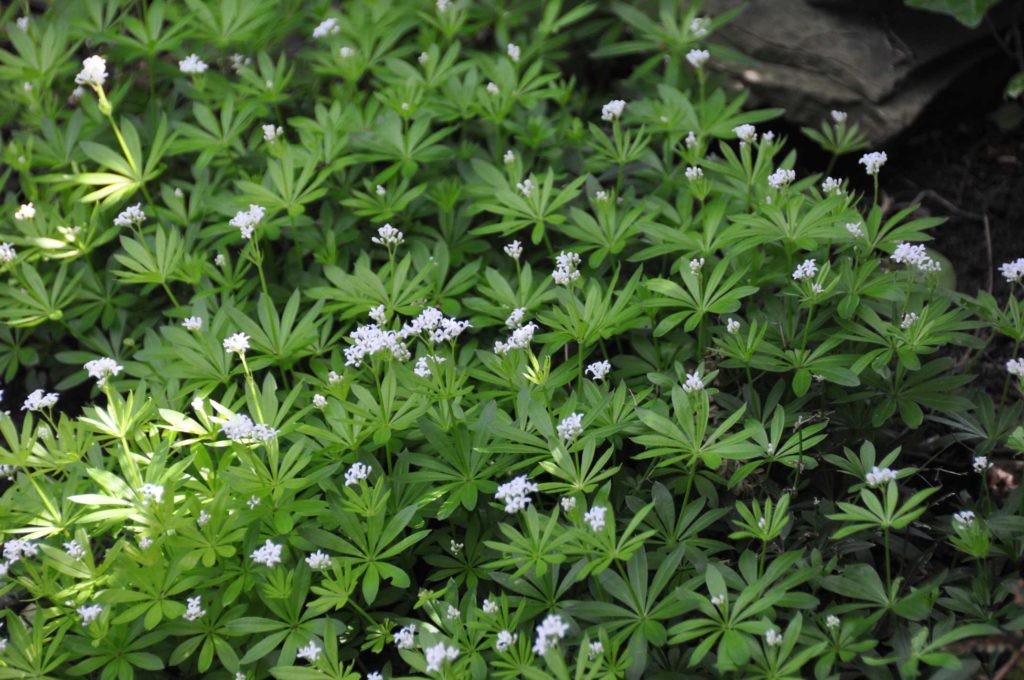At the back of my small suburban garden is a small dark plot, sandwiched between yew, hawthorn, holly and privet hedges and overshadowed by two huge trees including a large pear tree planted when the house was first built. more than a hundred years ago.
For the first ten years we just left it alone, a small wild area for the girls to explore and hang out but then I decided to rehabilitate the place. The hedges were cut back and what seemed like a mountain of compost was dug into the soil. During the process we found a path of tiles and a pile of york stone fashioned into an informal wall. There were also tonnes of stones, pieces of plant pot etc that must be the acquired detritus from the last 100 years.
Having cleared the space, I planted up plants described as suitable for “dry shade” into the main bed.
Over the years some of the plants have thrived, some have soldiered on and some have disappeared.
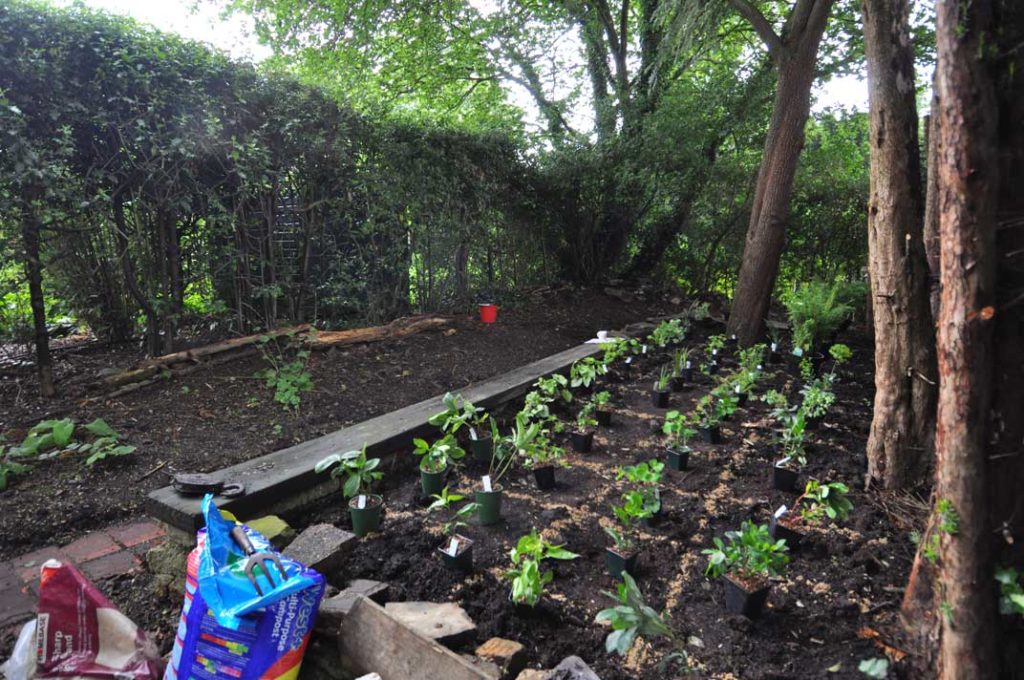
Despite all of them being officially good for dry shade, it was impossible to predict their survival rate.
Even within a small dark, dry plot, the variations in dryness (under the yew hedge versus centre of the plot) and the variations in shade (full shade to dappled) as well as the variety of plants have made the outcome of planting variable to say the least.
Favourite thugs such as alchemilla have been tested whereas hellebores that supposedly need some damp have thrived.
The bench has moved from the back to the side. York stone has been moved around to straighten beds and reduce the border height. Failing plants have been relocated or abandoned. Various compost bins have been converted into planters in an attempt to give new plants a space to grow where the various trees and hedges won’t immediately suck away the water from their roots.
Bits of detritus have been converted into ornaments. Genuine decorations have been added.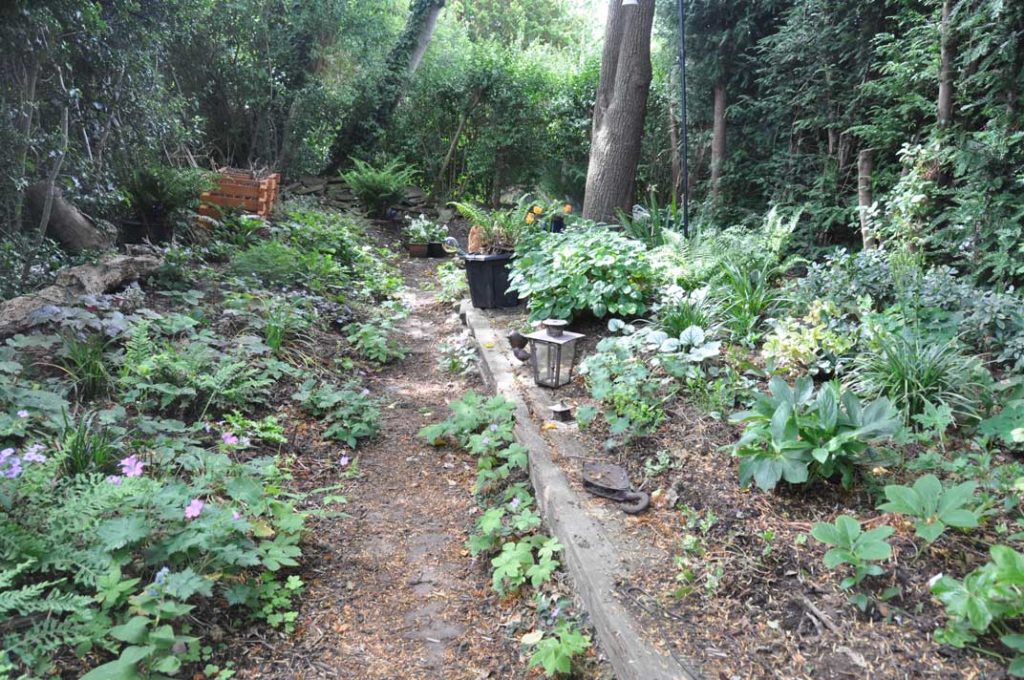
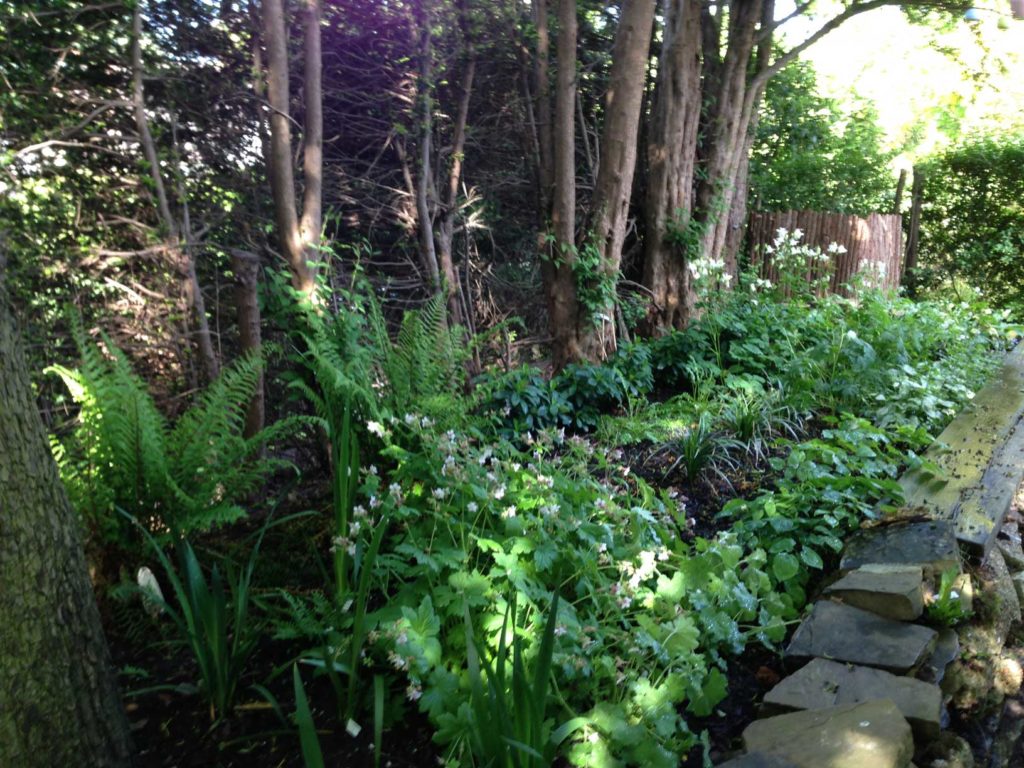
A bird feeder was added, abandoned, reclaimed and now stands somewhat lopsided near the pear tree. Fancy squirrels proof bird feeders have turned out to be useless against London squirrels at least – only cages keep them out.
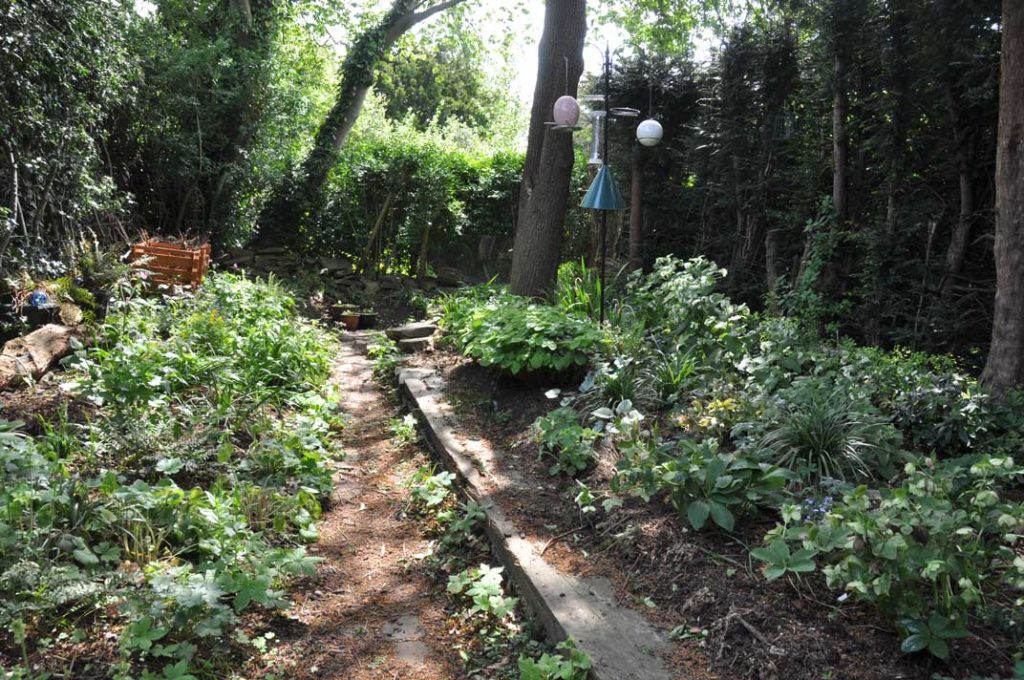
The bed closet to the holly hedge has been populated with weeds surviving and colonising the space, as well as plants left over from Winter baskets, mainly heucharas. Although dry, it gets the most sun of any of the beds (let’s call it dappled shade). If a plant seems surplus to requirements, rather than throw it out this is where it tends to end up.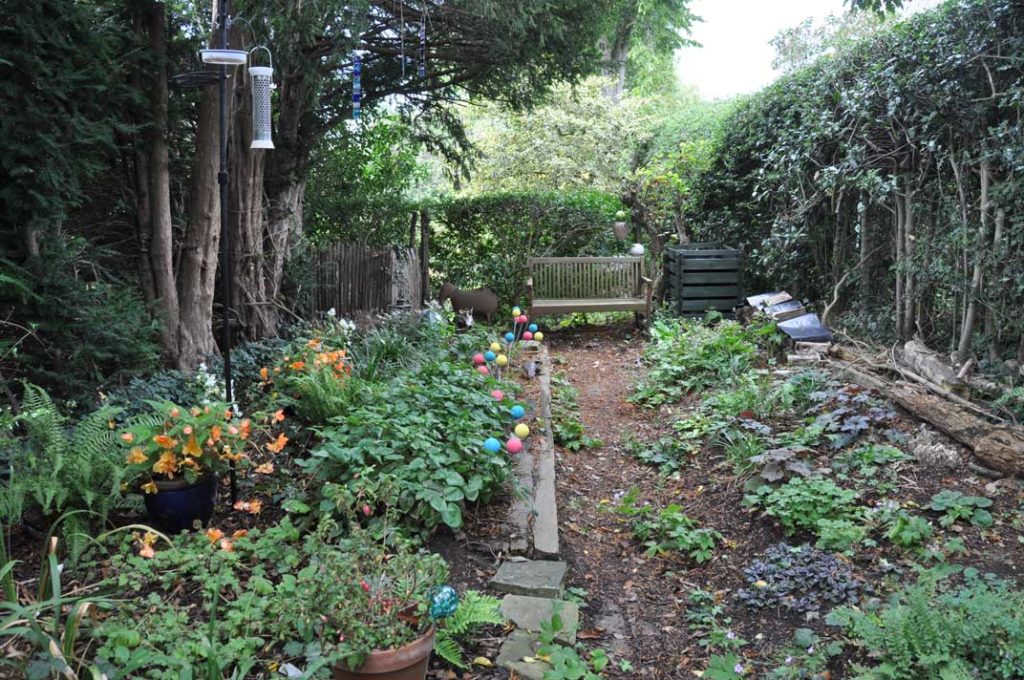
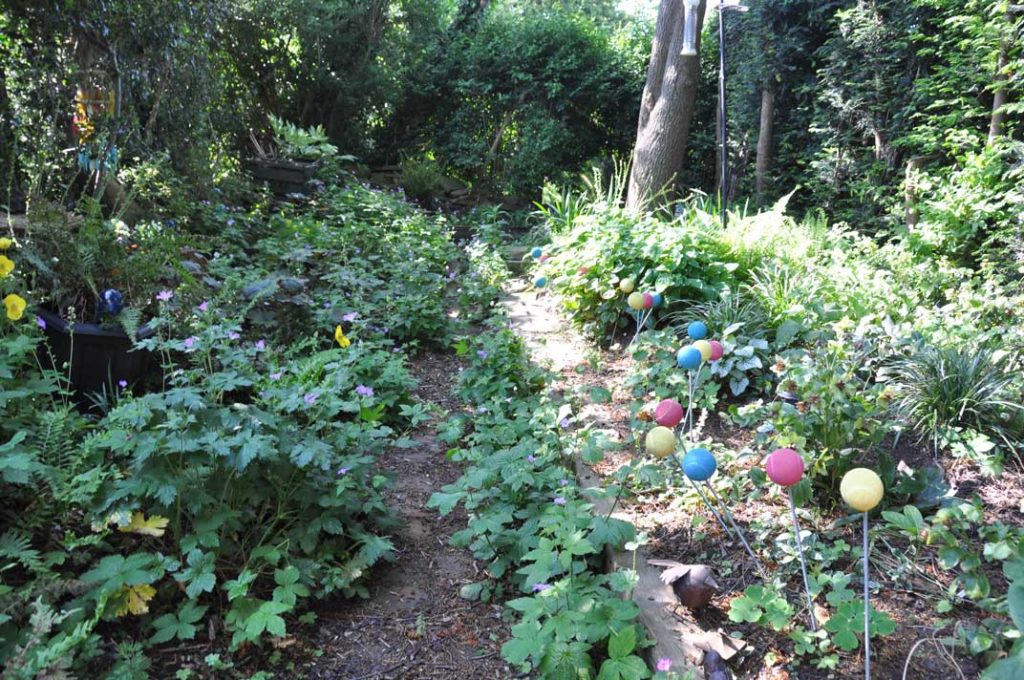
The yew hedge started out bare but has greened out quite well.
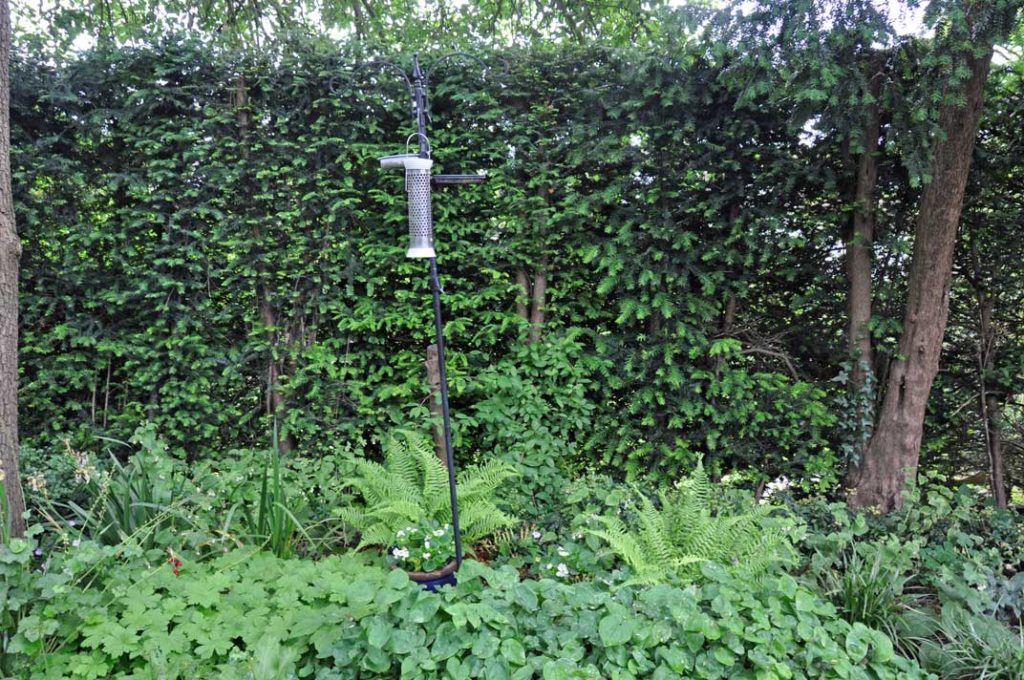
But some corners remain stubbornly bare.
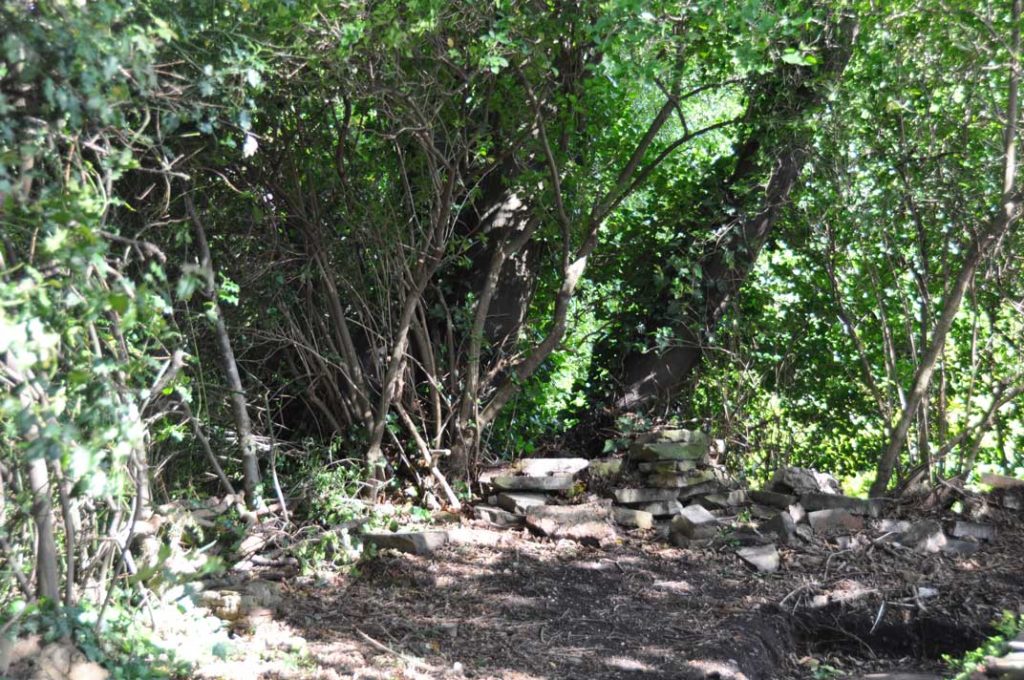
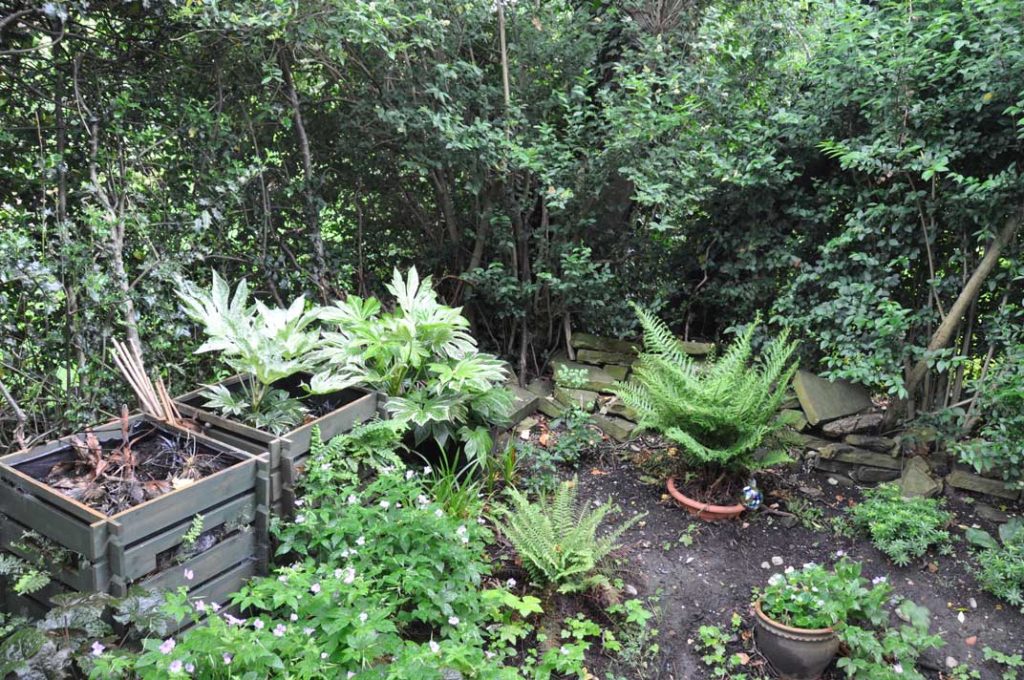
The most difficult spot is near the entrance, the archway through the yew hedge and directly under the pear tree and the sycamore tree.
Slowly the woodruff (gallium odorata) is colonising the bank to the right as you enter, and I’ve had some success by planting the larger ferns into pots dug into the ground.
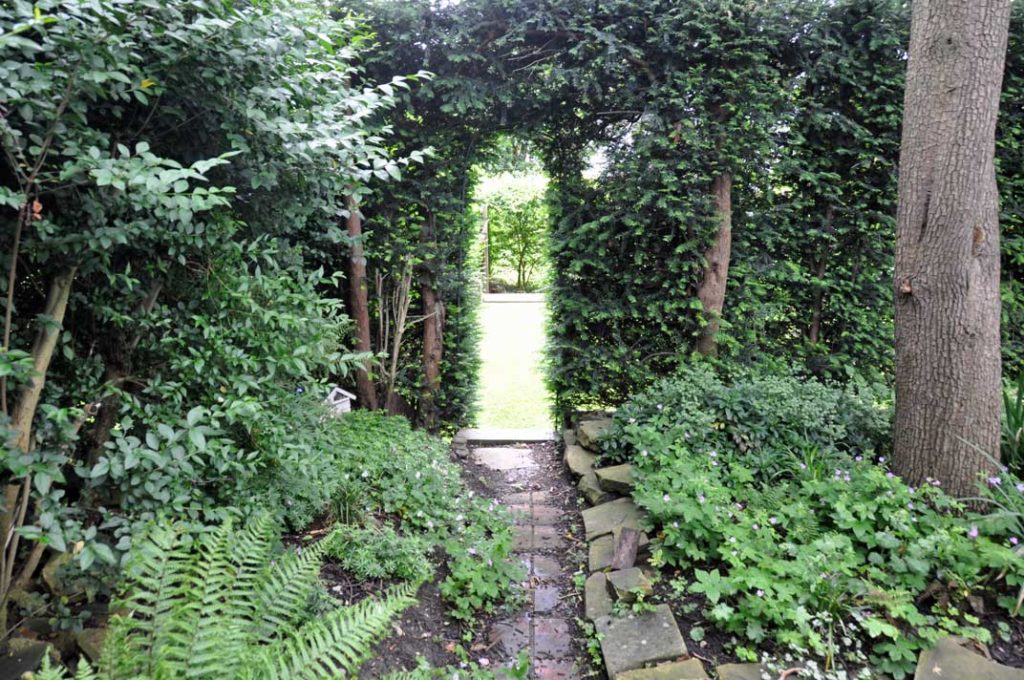
I am occasionally tempted to rip everything out and put in a shed or garden office down in the dark, however, though it has its problems this has to be counted as a successful project.
Nothing grew before we began, whereas now it’s beginning to flourish.

